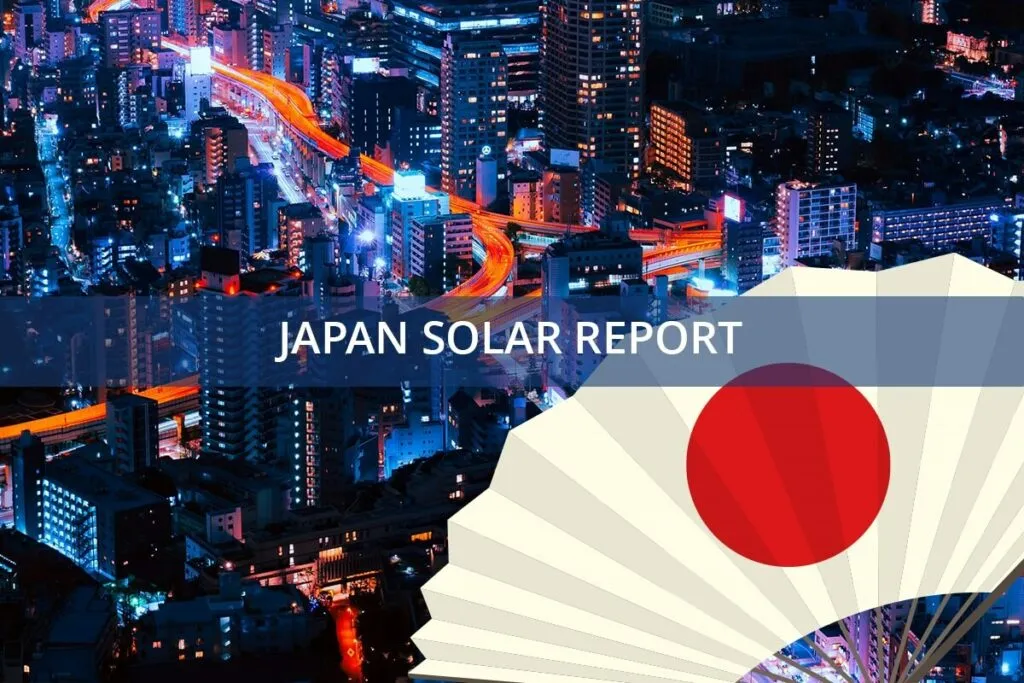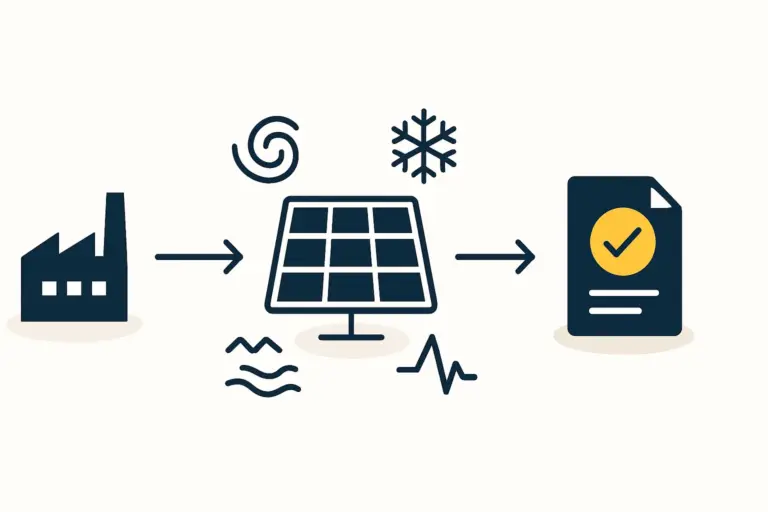For many international entrepreneurs, Japan may seem an unlikely candidate for a new manufacturing venture, often perceived as a high-cost market. A closer look, however, reveals a strategic opportunity. Spurred by a national imperative for supply chain security and a legacy of high-quality production, Japan is now actively encouraging investment in key industries, including solar photovoltaics.
For an investor considering this market, the first critical decision is not if, but where. The choice often narrows to two distinct regions, each with a compelling but different value proposition: Kyushu, the established southern technology hub, and Tohoku, the resilient northern region undergoing a strategic rebirth.
Understanding these nuances is the key to choosing the right factory location and ensuring long-term success.
The Strategic Importance of Japan’s Regional Industrial Zones
Japan’s industrial policy is highly regionalized. Instead of a one-size-fits-all approach, the government fosters specialized clusters that allow investors to tap into concentrated ecosystems of talent, suppliers, and infrastructure. For solar manufacturing, Kyushu and Tohoku represent the premier options.
Kyushu, often called “Silicon Island,” is the historic heart of Japan’s semiconductor and automotive manufacturing. Tohoku, in the northeast, is a region shaped by its resilience and a forward-looking focus on renewable energy, heavily supported by national reconstruction and innovation initiatives. The choice between them will fundamentally shape a new enterprise’s cost structure, supply chain, and growth trajectory.
Analyzing Kyushu: The Established High-Tech Hub
Kyushu’s reputation as a manufacturing powerhouse is built on decades of investment and a dense network of high-tech companies. For a solar module manufacturer, this ecosystem presents several distinct advantages.
Industrial Ecosystem and Supply Chain
The “Silicon Island” moniker is well-earned. The region is home to a mature ecosystem of companies in the electronics, semiconductor, and automotive sectors. This creates a rich environment for sourcing high-purity materials, precision components, and specialized manufacturing equipment.
The recent large-scale investment by TSMC in Kumamoto Prefecture further solidifies Kyushu’s position as a global semiconductor hub. This creates valuable ripple effects for adjacent industries like solar manufacturing that rely on similar technologies and a skilled workforce.

Logistics and Market Access
Kyushu’s geography is a significant asset. Major international ports like Hakata (Fukuoka) and Kitakyushu provide direct and efficient sea routes to key Asian markets, including South Korea, China, and Taiwan.
Ready to make big Profits?
The solar Industry is Booming
WE HELP NEWCOMERS to the solar industry start their own solar module production line. Customers can make BIG PROFITS by selling modules and finding investors, without wasting money and time on things they don't need!
This proximity is critical for an efficient supply chain, both for importing raw materials like polysilicon and glass and for exporting finished modules to the wider Asia-Pacific region.
Labor and Operating Costs
The region boasts a highly skilled labor pool with extensive experience in precision manufacturing. However, this expertise comes at a premium. Competition for engineers and technicians is high, driven by the concentration of major corporations, which pushes labor and land costs in Kyushu above those in Tohoku.
Still, costs remain significantly lower than in major metropolitan centers like Tokyo or Osaka. Investing here means prioritizing access to a premier talent pool and ecosystem over minimizing operational overhead.
Analyzing Tohoku: The Resilient Growth Region
The Tohoku region, comprising prefectures like Miyagi, Iwate, and Fukushima, presents a different but equally compelling case. Its industrial identity is being forged through strategic government support and a clear focus on building a sustainable future.
Cost Advantages and Government Incentives
Tohoku’s primary advantage is its cost structure. Industrial land and labor costs are considerably lower than in Kyushu, directly improving operational margins.
Moreover, in the wake of the 2011 Great East Japan Earthquake, national and prefectural governments have launched some of the country’s most generous incentive programs to attract investment. Initiatives like the “Fukushima Innovation Coast Framework” offer substantial subsidies, tax breaks, and R&D support specifically aimed at renewable energy. For investors, a thorough evaluation of local incentives in Tohoku can uncover financial advantages unmatched elsewhere in Japan.
Labor and Infrastructure
While Tohoku may not have the same density of high-tech firms as Kyushu, it has a dedicated and available workforce. Extensive investment has modernized the region’s infrastructure, including its ports, highways, and industrial parks.

A business establishing itself here may need to invest more in initial workforce training but will benefit from lower long-term labor costs and a community highly motivated to support new industrial projects.
A Focus on Renewable Energy
Tohoku is proactively positioning itself as Japan’s clean energy hub. This regional commitment creates a strong synergy for a solar manufacturing plant. Operating in a location that is ideologically and economically aligned with the renewable energy sector can foster stronger local partnerships, better access to green energy for factory operations, and a supportive regulatory environment.
A Comparative Framework for Decision-Making
The choice between Kyushu and Tohoku is not a question of which is “better,” but which is the right fit for a specific business strategy. The optimal location depends on an investor’s priorities regarding costs, supply chain integration, and market focus.
A simplified decision matrix might look like this:
Choose Kyushu if your priorities are:
- Immediate integration into a world-class electronics supply chain.
- Access to a deep pool of experienced engineers and technicians.
- Minimizing logistical lead times to South Korea, China, and Taiwan.
- Leveraging the “Silicon Island” brand for credibility.
Choose Tohoku if your priorities are:
- Minimizing initial capital expenditure and long-term operational costs.
- Maximizing access to generous government subsidies and tax incentives.
- Building a business in a region deeply committed to renewable energy.
- Securing a stable, long-term workforce with lower wage pressures.
Navigating such a complex decision requires a detailed feasibility study. From our experience with global projects, partnering with an expert in both solar technology and local market integration is invaluable, especially when planning a complete turnkey factory setup.

Frequently Asked Questions (FAQ)
What are the typical land costs in these industrial zones?
While prices fluctuate, industrial land in key zones in Tohoku can be 30–50% less expensive per square meter than comparable sites in Kyushu’s more developed areas like Fukuoka or Kumamoto. This cost differential is a significant factor in the total initial investment.
Is the language barrier a significant challenge for factory setup?
Yes, the language and business culture can be challenging for foreign investors. Engaging local partners, consultants, and bilingual management staff is crucial for effectively navigating regulatory processes, contract negotiations, and day-to-day operations.
How long does it typically take to get a solar factory operational in Japan?
The timeline depends on the project’s scale and complexity. However, accounting for site acquisition, permitting, construction, and equipment commissioning, a realistic timeframe is 18 to 24 months. Careful planning is essential to navigate Japan’s meticulous regulatory environment.
Are government incentives available to foreign-owned companies?
Absolutely. Most regional and national incentive programs in Japan are specifically designed to attract Foreign Direct Investment (FDI). Foreign-owned entities are generally eligible for the same subsidies, grants, and tax benefits as domestic firms, provided they meet the specified criteria for employment and investment.
The decision of where to establish a solar manufacturing facility in Japan is a foundational choice. Kyushu offers the security of an established, world-class ecosystem, while Tohoku provides a compelling opportunity for growth, value, and strategic alignment with the future of renewable energy. A thorough analysis of your business model’s unique priorities is the essential first step toward making a successful investment in this promising market.






